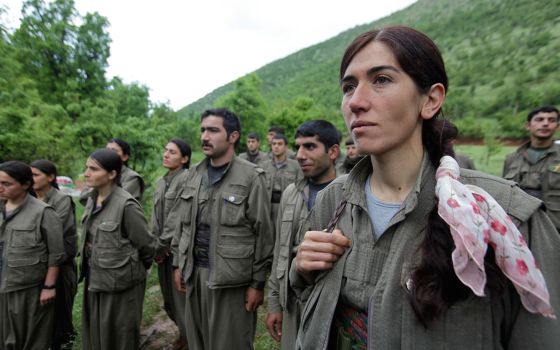“We don’t see things as they are, we see things as we are.” [Source]
I have been waiting all my life for what 2014 has brought. It has been a year of feminist insurrection against male violence: a year of mounting refusal to be silent, refusal to let our lives and torments be erased or dismissed. It has not been a harmonious time, but harmony is often purchased by suppressing those with something to say. It was loud, discordant, and maybe transformative, because important things were said – not necessarily new, but said more emphatically, by more of us, and heard as never before.
It was a watershed year for women, and for feminism, as we refused to accept the pandemic of violence against women – the rape, the murder, the beatings, the harassment on the streets and the threats online.
Further into her essay, Solnit says:
Sometimes at big political demonstrations – against the war in Iraq in early 2003, for example – the thousands of placards with handwritten statements, jokes, and facts, for all their brevity, constitute a cumulative critique that covers a lot of angles. Social media can do the same, building arguments comment by comment, challenging, testing, reinforcing and circulating the longer arguments in blogs, essays and reports. It’s like a barn-building for ideas: innumerable people bring their experiences, insights, analysis, new terms and frameworks. These then become part of the fabric of everyday life, and when that happens, the world has changed. Then, down the road, what was once a radical idea becomes so woven into everyday life that people imagine that it is self-evident and what everyone always knew. But it’s not; it’s the result of a struggle – of ideas and voices, not of violence.
Strangely, in a piece that runs close to 5,000 words, the women who have been the targets of ISIS’s violence and the women who have been fighting against ISIS earned not a single mention.
Silence leaves a vacuum that can only be filled with speculation, but the reason for this omission seems to be spelt out in the terms by which Solnit describes effective political activism: it is defined by the absence of violence.
But did this Yazidi girl betray feminism by picking up an AK-47?
#Iraq, Becoming an almost iconic picture, #Yazidi girl with an #AK47 to protect her family against #ISIS. pic.twitter.com/CScIaBXAvM
— Danny Makki (@Dannymakkisyria) August 18, 2014
Since the battle for Kobane began and due to its convenient location right next to the Turkish border gained several weeks of intense international media attention — the battle continues but the media has mostly lost interest — the heroism of Kurdish women has been highlighted.
Zîlan Diyar, a Kurdish guerrilla fighter, wrote last month:
The whole world is talking about us, Kurdish women. It has become a common phenomenon to come across news about women fighters in magazines, papers, and news outlets. Televisions, news sites, and social media are filled with words of praise. They take photos of these women’s determined, hopeful, and radiant glances. To them, our rooted tradition is a reality that they only recently started to know. They are impressed with everything. The women’s laughter, naturalness, long braids, and the details of their young lives feel like hands extending to those struggling in the waters of despair. There are even some, who are so inspired by the clothes that the women are wearing, that they want to start a new fashion trend! They are amazed by these women, who fight against the men that want to paint the colors of the Middle East black, and wonder where they get their courage from, how they can laugh so sincerely. And I wonder about them. I am surprised at how they noticed us so late, at how they never knew about us. I wonder how they were so late to hear the voices of the many valiant women who expanded the borders of courage, belief, patience, hope, and beauty.
The fact that Solnit is not talking about Kurdish women, seems to imply that for her and perhaps many other activists in the West, the use of violence can never be defended.
If this interpretation is correct, this dedication to the principle of non-violence seems to me less a matter of principle than a luxury only available to those whose own lives are not under immediate threat.
I also have to wonder whether those who have chosen to ignore the Kurds, failed to notice that in Rojava — the Kurdish-controlled part of Syria — a political experiment has been underway for the last three years that deserves the interest and support of anyone who believes in the creation of an egalitarian and truly democratic society.


